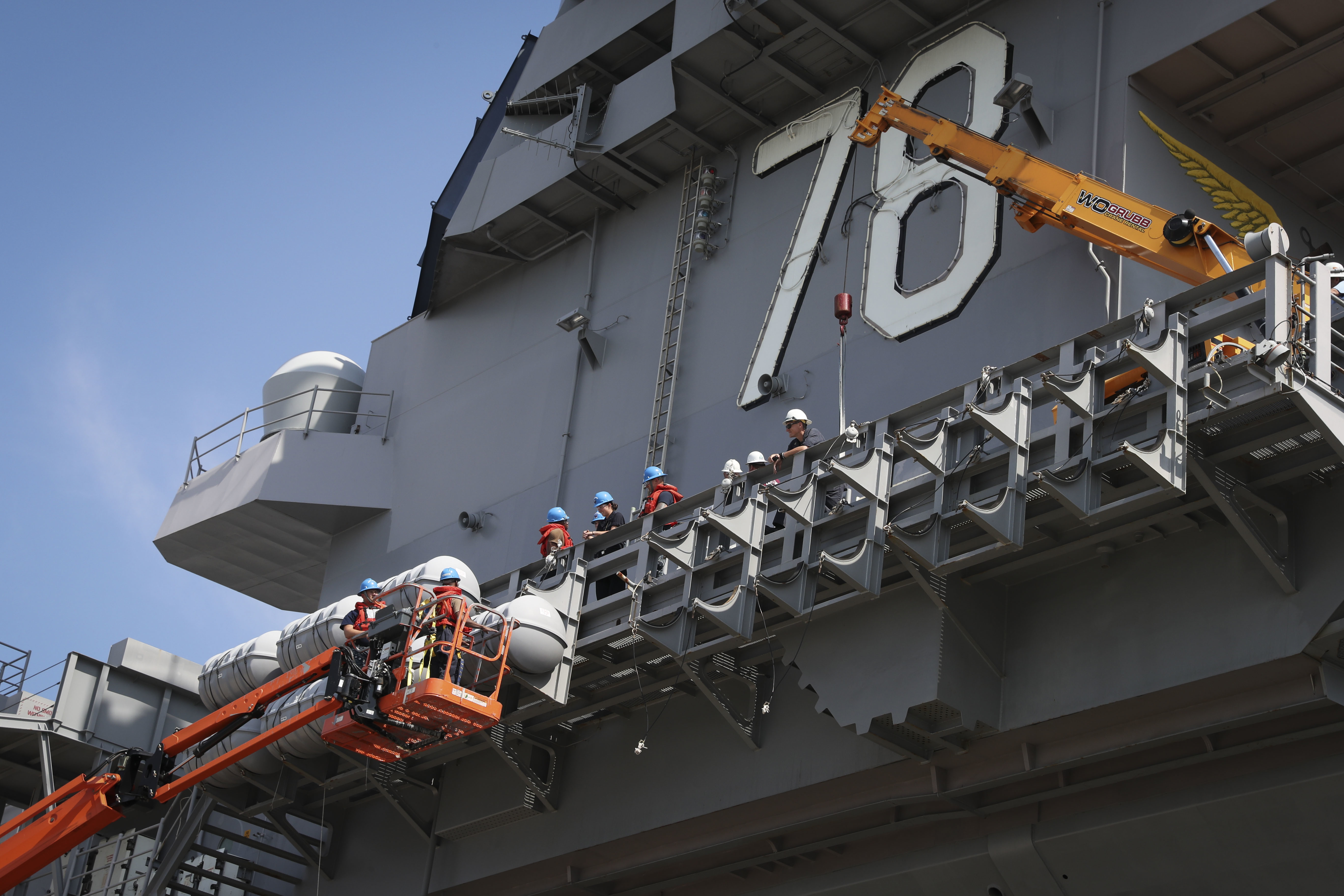
Sailors assigned to the deck department of the aircraft carrier USS Gerald R. Ford (CVN-78) off-load Mark 8 life rafts from the ship’s flight deck on July 8, 2018. US Navy Photo
After spending 81 days at sea spread out during eight steaming events, USS Gerald R. Ford (CVN-78) is back at Huntington Ingalls Industries Newport News Shipbuilding for a year-long maintenance and upgrade period.
For the next year, Ford’s post-shakedown availability (PSA)/selected restricted availability (SRA) will concentrate on installing the aircraft carrier’s remaining combat systems, completing any deferred work and correcting a propulsion manufacturing defect discovered in January.
Discovering the propulsion train component defect delayed the PSA start from April to now, Bill Couch, a NAVSEA spokesman told USNI News on Monday. Originally intended to last about eight months, the PSA was extended to 12 months to also accommodate deferred work such as constructing an advanced weapons elevator and upgrading the advanced arresting gear.
“One year ago this month we commissioned USS Gerald R. Ford, the world’s most technologically advanced aircraft carrier. Since that historic day, Ford has performed exceptionally due to a combination of innovative engineers, skilled craftsmen and professional and dedicated sailors,” Rear Adm. Roy Kelley, commander of Naval Air Force Atlantic, said in a statement. “Since commissioning, her accomplishments are many. As she enters a necessary maintenance period, I’m excited to see what the future holds for CVN-78 when she returns to sea. No nation on earth can match the capability of USS Gerald R. Ford, a class of ship which will lead our Navy well into the 21st century.”
Since commissioning on July 22, 2017, Ford has successfully completed nearly 750 shipboard aircraft launches and recoveries, nearly double the approximately 400 launches and recoveries originally planned, according to the Navy. Ford also certified its air traffic control center, its JP-5 fuel system, demonstrated daytime and nighttime replenishment capability and the ship’s defensive systems. Ford was delivered to the Navy in June 2017, a year-and-a-half later than planned.
The $13 billion Ford uses five new technologies designed specifically for the new aircraft carrier class. A new radar, an advanced arresting gear, electromagnetic aircraft launchers and a new reactor design are among technological advances. The Ford-class propulsion system generates three times the electricity as previous carriers, according to the Navy.
Following the PSA/SRA, Ford is scheduled for another round of trials and testing, including full-ship shock trials. As of now, Ford is expected to be ready for deployment in 2022, Couch said.
“Congratulations to everyone who has helped bring CVN-78 to this historic milestone,” Rear Adm. Brian Antonio, program executive officer for aircraft carriers, said in a statement. “Following Gerald R. Ford’sdelivery to the Navy on May 31, 2017, the ship’s crew has been diligently and successfully conducting post-delivery testing and trial operations that identify construction and design issues. They have been extremely effective in identifying any issues early, which helps us address them prior to returning to the fleet.”
